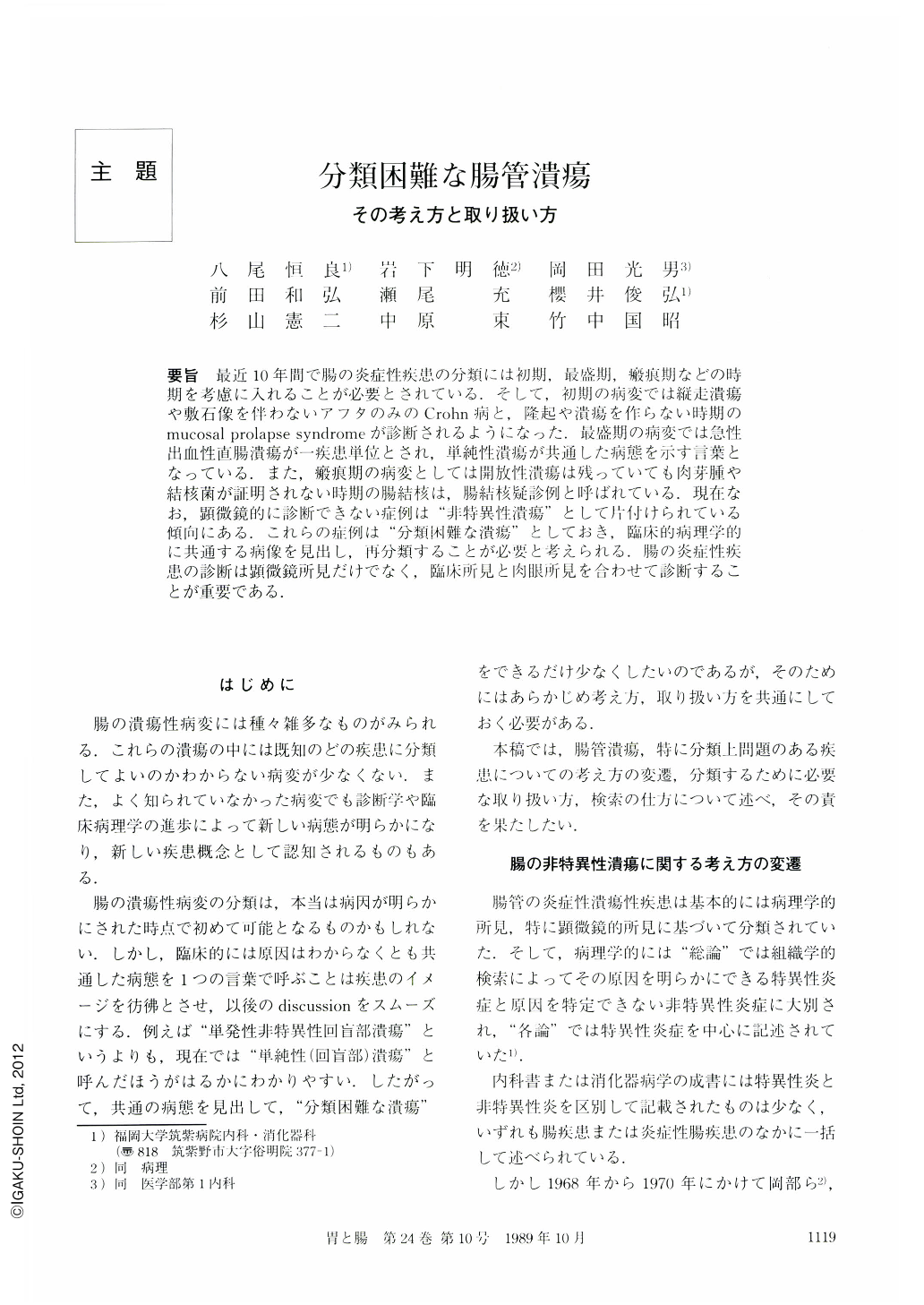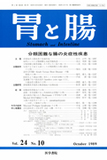Japanese
English
- 有料閲覧
- Abstract 文献概要
- 1ページ目 Look Inside
- サイト内被引用 Cited by
要旨 最近10年間で腸の炎症性疾患の分類には初期,最盛期,瘢痕期などの時期を考慮に入れることが必要とされている.そして,初期の病変では縦走潰瘍や敷石像を伴わないアフタのみのCrohn病と,隆起や潰瘍を作らない時期のmucosal prolapse syndromeが診断されるようになった.最盛期の病変では急性出血性直腸潰瘍が一疾患単位とされ,単純性潰瘍が共通した病態を示す言葉となっている.また,瘢痕期の病変としては開放性潰瘍は残っていても肉芽腫や結核菌が証明されない時期の腸結核は,腸結核疑診例と呼ばれている.現在なお,顕微鏡的に診断できない症例は“非特異性潰瘍”として片付けられている傾向にある.これらの症例は“分類困難な潰瘍”としておき,臨床的病理学的に共通する病像を見出し,再分類することが必要と考えられる.腸の炎症性疾患の診断は顕微鏡所見だけでなく,臨床所見と肉眼所見を合わせて診断することが重要である.
On classifying inflammatory diseases of the bowel it has become important in the last ten years to take into consideration disease phases such as early, flourishing, or cicatrizing phase. Diseases at earlier stages have now become diagnosable, such as Crohn's disease solely with aphthous changes without longitudinal ulcers or cobblestoning, and mucosal prolapse syndrome at early stage before elevations or ulcerations develop. Regarding flourishing phase, acute hemorrhagic rectal ulcer is now considered a clinical entity, and “simple ulcer” a comprehensive term to describe various disorders with a common feature. With respect to cicatrizing phase, intestinal tuberculosis with or without active ulcers in which neither caseation necrosis nor tuberculous bacilli are demonstrated, is now called “probable” intestinal tuberculosis.
The diagnosis of inflammatory diseases of the bowel, as a result, should be based not only on microscopic findings but also on clinical and macroscopic features.

Copyright © 1989, Igaku-Shoin Ltd. All rights reserved.


